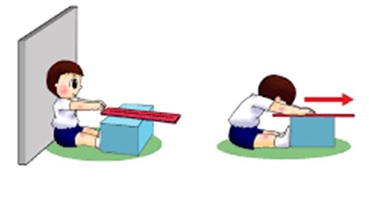THE PATTERN FOR TESTING MOTOR ABILITIES OF JUNIOR HIGH SCHOOL STUDENTS
DOI:
https://doi.org/10.14456/nrru-rdi.2023.48Keywords:
Motor ability test, Normative criteria of motor ability, Junior high schoolAbstract
The use of knowledge and carefulness to create quality test that effectively measure students' knowledge and abilities. This leads to the research objective, which were to create a test and to establish normative criteria for motor ability among junior high school students. The target group 30 cases were included as sample using simple random sampling method, 195 cases selected using a lottery method, and 2 cases selected using purposive sampling method. The instruments used were a test and a test score recording sheet, totally 6 items with the content validity index of two versions ranging from 0.80-1.00. Data were collected through two rounds of testing and analyzed using statistics to find Pearson correlation coefficients, means, standard deviations, and transformed scores for each test item into T-score. The findings indicated that the six tests created consisting of five elements were as follows: (1) objectives, (2) equipment, (3) location, (4) testing process, and (5) result recording. All the items had high reliability and were highly valid. The first test list was “single-leg balance on a ball receptor for 30 seconds" which had the highest mean score of 17.83 and a standard deviation of 11.36 for the normative criterion. The developed interpretation criteria included five levels: excellent, good, average, poor, and very poor. These levels are a quality result and appropriate to use as tool for early teenager (junior high school students) aged 13-15.
References
Boonchai, V. (1986). Testing and measurement in physical education (2nd ed.). Bangkok : Thai Watthana Panich. (In Thai)
Bouwer, R., Koster, M., & Van den Bergh, H. (2023). Benchmark rating procedure, best of both worlds? Comparing procedures to rate text quality in a reliable and valid manner. Assessment in Education: Principles, Policy & Practice, 30(3-4), 302-319. https://doi.org/10.1080/0969594X.2023.2241656
Clarke, H. H. (1976). Application of Measurement to Health and Physical Education (5th ed.). New Jersey : Prentice-Hall, Inc.
Hopster den Otter, D., Wools, S., Eggen, T. J. H. M., & Veldkamp, B. P. (2019). A general framework for the validation of embedded formative assessment. Journal of Educational Measurement, 56(4), 715–732. https://doi.org/10.1111/jedm.12234
Kamutsri, T. (2017). Physical Fitness Conditioning (Revised Edition). Bangkok : Media Press. (In Thai)
Kirkendall, D. R., Gruder, J. J., & Johnson, R. E. (1980). Measurement and Evaluation in Physical Education. Dubuque, Iowa : Wm. C. Brown Company.
Kwankeaw, N. (2019). Construction of Scoring Rubric of Track and Field Skills for Mathayomsuksa 2 Students. Thesis, Master of Education Program in Physical Education, Faculty of Education, Thailand National Sports University, Krabi Campus, Krabi. (In Thai)
Lyman, H. B. (1971). Test Scores and What They Mean. New Jersey : Prentice-Hall.
Magill, R. A. (2001). Motor Learning Concepts and Applications (6th ed.). New York : McGraw-Hill Book.
Mathews, D. K. (1973). Measurement in Physical Education (4th ed.). Philadelphia : W. B. Saunders Company.
Mathews, D. K. (1978). Measurement in Physical Education (5th ed.). Philadelphia : W. B. Saunders Company.
Ministry of Education. (2010). Basic Education Core Curriculum 2008. Bangkok : Agricultural Cooperatives Association of Thailand. (In Thai)
Office of the Secretariat of the Education Council. (2019). National educational standards 2018. Bangkok : 21 Century. (In Thai)
Pannak, S. (2020). The Development of Motor Skill Learning in Physical Education Activities. Humanities and Social Sciences Journal of Graduate School, Pibulsongkram Rajabhat University, 14(1), 1-14. (In Thai)
Pianchob, W. (2018). Philosophy, principles, teaching methods, and measurement for educational evaluation. Bangkok : Chulalongkorn University Press. (In Thai)
Registration work, Demonstration School of Kasetsart University. (2023). Annual Report 2023. (Mimeographed). (In Thai)
Ritcharoon, P. (2002). Measurement Evaluation (8th ed.). Bangkok : House of Kermest. (In Thai)
Sanguanphong, U. (2012). Textbook, basic subject, health education, Mathayom 6 (A.U. edition). Bangkok : Academic Quality Development Company (P.W.). (In Thai)
Sarapee, T. (2022). Development Motor Ability by Co-ordination Program of Elementary School Students in Southern Border Provinces. Thesis, Master of Education Program in Curriculum and Instruction, Prince of Songkla Univeristy, Songkla. (In Thai)
Schmidt, R. A. (1991). Motor learning and performances : from principles to practice. Illinos : Human kinetics.
Singer, R. N. (1971). Motor Learning and Human Performance: An Application to Physical Education Skills. New York : The Macmillan Company/Collier Macmillan Limited.
Strand, B. N., & Wilson, R. (1993). Assessing Sport Skills Test. Illinois : Human Kinetics Publishers.
Wanichbancha, K. (2023). Statistics for research (14th ed.). Bangkok : Samlada. (In Thai)
Willgoose, C. E. (1961). Evaluation in Health Education and Physical Education. New York : McGraw-Hill.

Downloads
Published
How to Cite
Issue
Section
License

This work is licensed under a Creative Commons Attribution-NonCommercial-NoDerivatives 4.0 International License.




